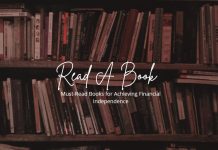Feeding is a fundamental aspect of dairy farming. The nutritional needs of dairy cattle are critical to their overall health and milk production. Effective feeding systems not only ensure that cows receive the right nutrients but also play a role in farm efficiency and sustainability.
Traditional vs. Modern Feeding Systems
Traditionally, dairy farmers employed manual feeding methods, including tossing hay and distributing grains by hand. These methods, while time-consuming, were effective. However, modern dairy farms have adopted automated feeding systems that offer more precision and efficiency. Automated systems can include robotic feeders, conveyor belt systems, and computerized mixers.
Computerized Mixers and Precision Nutrition
Computerized mixers have become increasingly popular in dairy farming. These machines allow farmers to precisely control the composition of the cattle’s feed, customizing it to meet the specific nutritional needs of individual cows or groups. This precision is crucial in optimizing milk production, reproduction rates, and overall herd health.
Robotic Feeders and 24/7 Access to Food
Robotic feeders provide dairy cattle with access to food around the clock. These systems offer cows the flexibility to eat when they are hungry, which can improve their overall well-being. Robotic feeders can also reduce competition among cows, as each animal can access its own designated feeding station.
Conveyor Belt Systems and Efficiency
Conveyor belt systems are designed for large-scale dairy operations. These systems transport feed from storage facilities to the feeding area, saving farmers considerable time and labor. They can be programmed to deliver specific quantities of feed at scheduled times, ensuring that cows receive consistent meals.
The Role of Feed Analysis
Regardless of the feeding system used, the key to successful dairy cattle nutrition is understanding the nutritional content of the feed. Farmers need to regularly analyze their feeds to ensure that they are providing the right balance of protein, carbohydrates, vitamins, and minerals. Feed analysis helps in adjusting the ration to meet the changing needs of the herd.
Grain Silos and Storage
In addition to feeding systems, grain storage is essential in dairy farming. Grain silos are used to store and protect the grains that are part of the cattle’s diet. Proper storage prevents spoilage and ensures that high-quality feed is available throughout the year.







